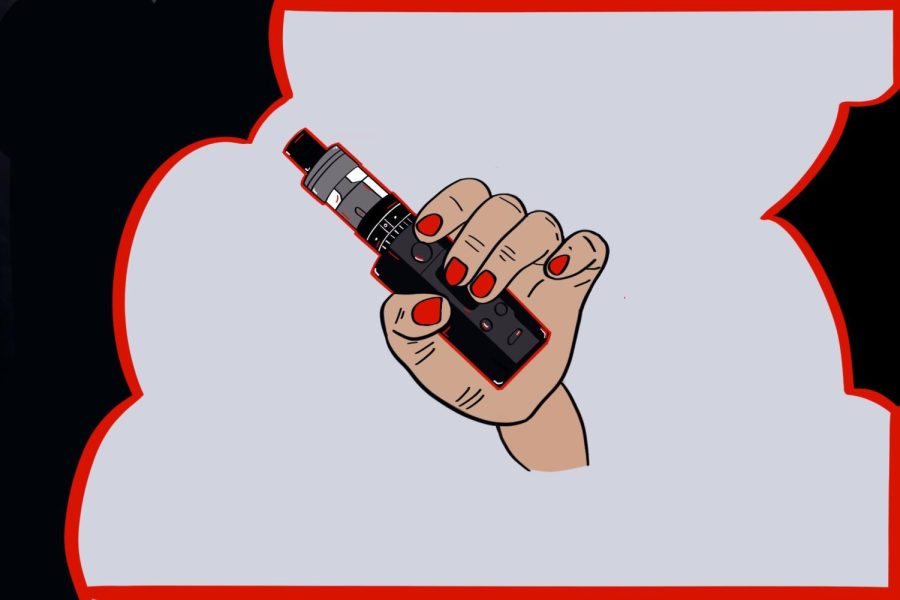Vape Use on Campus Still a Problem Despite New CA Ban on Flavors
Prop 31 bans the sale of flavored vapes but the problem of teen vaping persists.
Proposition 31 was recently passed to ban the sale of vape in California, and lessen its effects on youth. However, it is unclear if the bill will be effective.
December 1, 2022
“Waiting and waiting and waiting.” That’s how a student describes their cravings to vape.
Right now, 1 in 7 high schoolers say they vaped recently, according to the National Youth Tobacco Survey. On Nov. 8, Proposition 31 was passed by California voters banning the sale of flavored vape products to minimize their effects, especially on youth.
On campus, electronic cigarette usage is strictly prohibited by CUSD board policy, with potential consequences of suspension and even expulsion (depending on the offense).
Even if you don’t see vaping, that doesn’t mean it isn’t happening.
“In my opinion, I’m not so sure there are days that they’re not doing it, there’s just days that we’re not catching them,” said campus supervisor Kim Jenson.
Jenson says she typically catches students vaping in the campus parking lot and bathrooms, before and during school. After working on campus for 15 years, the supervisor is able to recognize the subtle giveaways, like the wary glances and trends in leaving class.
“It’s patterns,” said Jenson.
However, some students still manage to hide vaping on campus.
“Do it nonchalant. Don’t make a big deal about it. You go in there, do your needs, whatever you need to do. Get out, make sure you just look perfectly chill, and you’re good,” said a student, who spoke to The Express on condition of anonymity.
According to Yale Medicine, the nicotine in vape releases dopamine, a “feel-good” feeling, providing an enticing rush of energy to its users. While many effects of vaping are still unclear, usage is linked with lung injury and may increase the chance of heart attacks, according to John Hopkins Medicine.
“Nicotine especially, it’s just so addictive, and especially the hand and mouth placement, it’s really hard to stop,” said the student. “It ruined my lungs. I have a continuous cough that doesn’t go away.”
Still, users stay hooked on the feeling.
“That craving is real. I know because I had it. I know what that craving’s like, where it’s been two or three hours, and you haven’t had a cigarette. Your body starts craving that nicotine,” said Jenson. “It was the hardest habitat I’ve ever quit.”
The supervisor smoked cigarettes throughout high school, but now adamantly advises students to never start the habit. Compared to traditional cigarettes, vapes are often higher in nicotine concentration. Popular e-cigarette seller JUUL sells products that may contain levels of nicotine 5 to 8 times higher than other smoking methods, according to animal studies conducted by the researchers at the University of San Francisco. E-cigarettes may be even more addictive than their traditional counterparts.
“Me and my girlfriends, we’d steal cigarettes from my mom, but I was stupid, I started smoking for real, I started inhaling right off the bat. I didn’t fake it, and so I got addicted to nicotine. And vape pens are in much more higher quantity of nicotine, so they’re even harder to quit,” said Jenson.
Though the effects of vaping are not completely understood yet, Jenson says that her effects of smoking cigarettes truly began to show with time. The effects of vaping may be similar.
“It damages you from the inside out. So it is definitely damaging your lungs. It also damages our skin. I look much older than I am because I smoked for years,” said Jenson.
The consequences can last a lifetime.
“Yes I do regret it. I mean my taste is all back now and my smell is all back, but it affects your taste and smell. And, other people can taste it on you too and smell it on you too, so who wants that?” said Jenson.
Proposition 31 aims to minimize the negative effects of vape usage in California. It passed overwhelmingly with more than 63% of voters in favor of the proposition. The measure will be effective by December 21, 2022.



